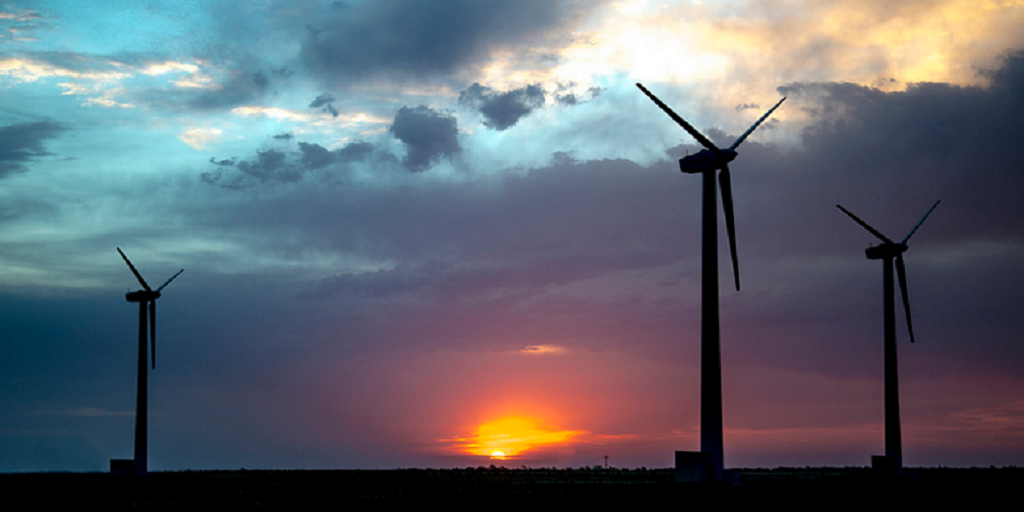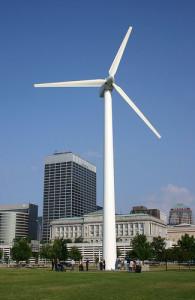Whenever I drive past the Great Lakes Science Center on my way into Cleveland, I pass the giant wind turbine installed outside the museum. I’ve seen it so many times that the 150-foot turbine barely registers anymore, except on particularly windy days when its rotors are whipping around at an intimidating speed. It’s apparently one of the most-viewed wind turbines in the world, oddly, due to its location in front of the often-filmed Rock and Roll Hall of Fame, the Cleveland Browns’ Stadium, and the Science Center. Hey, another thing I can brag about when trying to get my friends to visit me in Cleveland! “Want to see one of the world’s most famous wind turbines? I thought so!”
In all seriousness, it is a point of pride for me that my hometown has become very conscientious about sustainability over the past several years. Wind power is one of the largest areas of research into renewable energy, and so it makes me happy to see not only the massive Science Center turbine but the other, less-famous ones scattered around Northeast Ohio. If you want to talk about serious wind energy research, though, you’ll want to check out Sandia National Laboratories. The US Department of Energy Contractor carries out critical research in the areas of national security, defense, energy and climate issues, and their Scaled Wind Farm Technology (SWiFT) facility, located at Texas Tech University in Lubbock, Texas, uses top-of-the-line technology for its research into improving wind energy.
“It is well known that large amounts of wind energy are not effectively harvested in large wind farms because the turbines ‘shadow’ each other and reduce the output of the turbines located in their wake. The wakes also produce increased turbulence and uneven loading on the shadowed turbines, increasing fatigue issues that eventually affect a wind farm’s longevity and reliability.”
Like so much other sustainable technology, wind turbines lend themselves well to 3D printing, and 3D printing will be used to produce the new, aerodynamic blade for the National Rotor Testbed (NRT), which will be used to replicate the wakes generated by utility-scale rotors in a typical wind farm. The NRT will be installed at the SWiFT facility, where researchers will collect data such as wind measurements in hopes of developing potential solutions to wake interference issues.

